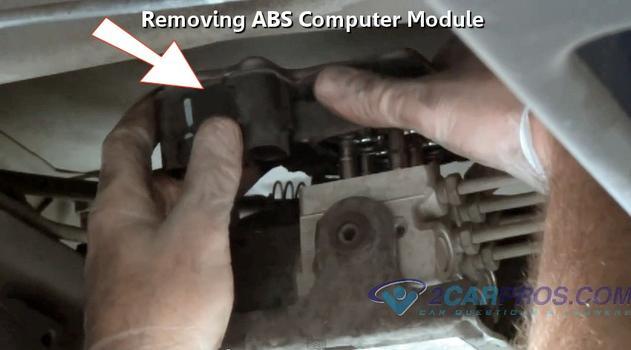C1225 - Left Front Excessive Wheel Speed Variation
C1232 - Left Front Wheel Speed Circuit Open or Shorted
These are real common codes on GM front-wheel-drive cars and are repaired by replacing the wheel bearing assembly. Your voltage readings have no value other than to prove the sensor is developing a signal. Most commonly the defect will be detected at slower speeds and that's when the fault code will set and the warning light will turn on. Before it gets that bad, the common symptom is "false activation", meaning the system kicks in and tries to modulate pressure to one brake when in fact, that tire is not skidding.
All magnetic sensors such as these need three things to generate a signal. That is a magnet, a coil of wire, and most importantly, movement between them. The movement is why the signals are stronger at higher speeds. Due to the design, these sensors develop very weak signals to start with, then, when the normal play in the wheel bearing develops, the magnet can move away from the coil of wire just enough to lower the signal voltage to the point the computer can't read it. That is interpreted as that wheel has locked up and brake fluid pressure needs to be reduced.
The voltage you read proves the sensor's coil of wire is okay and is capable of generating a signal. The problem is the amount of voltage is irrelevant as long as it is high enough for the computer to read it. At higher road speeds it will simply be easier for it to read the signal. It's the frequency of that signal that is proportional to wheel speed. That's the only thing the computer cares about.
You can compare this to a singer who murders the national anthem at a sporting event and holds a note for all it's worth, to impress us. That note has two variables, pitch and volume. Your ears want to know the pitch to tell if she's off-key, but the volume only has to be loud enough for you to hear it. Many singers think loud is good, so they put all their effort into that, but if the note is at a real low volume and you can't hear it, you can't tell the pitch either. Fix the volume, then you can hear the pitch. Fix the signal voltage, then the computer can read the frequency / road speed.
The second issue is in how the problems are detected. In the case of wheel speed sensors, the computer compares them to each other while you're driving. When a code is set for one of them, the computer knows it can't rely on that as an accurate reference for the others, so it won't run tests on them, and it won't set a fault code if a second problem occurs. Once the mechanic reads the only stored code, he makes his diagnosis and repair estimate based on that. Once the repairs are completed and he goes on a test drive the tests resume running and if there's another problem, that's when it will be detected, a new code will be set, and the warning light will come on again. That is frustrating for mechanics because they have to start their diagnosis all over and they have to tell you more parts and services are needed. It's frustrating for owners because they incorrectly assume the mechanic didn't diagnose the problem correctly the first time. This problem is easy to avoid if the defect is taken care of right away, before the second problem has time to develop. Where we run into this most often is when you tell us the warning light has been on for a few months, and you just now decided to have it looked at. Be aware too it is pretty common for the same thing to happen to a new wheel bearing in as little as 15,000 miles. In fact, the dealers' scrap metal bins are full of these bearing assemblies. As a point of interest, the old ones will work just fine on a different car that doesn't have anti-lock brakes. You can tap the sensor ring off or just don't plug it in.
A lot of DYI increase the chances of a new bearing developing the same problem when they do not torque the axle nut to specs. That must be done with a click-type torque wrench before any vehicle weight is put on it. The value is critical too. All wheel bearings call for at least 180 foot-pounds but some GM cars and trucks call for up to 240 foot-pounds. The correct value will be listed on the sheet that comes with the bearing, or I can look it up for you.
If you need more information on the procedure, take a look at this article:
https://www.2carpros.com/articles/bearing-hub-replacement
This one shows replacing a rear bearing with no half shaft. You'll have an extra step in removing the axle nut, but the half shaft doesn't have to be pulled out. The most important thing to be aware of is the bearing will instantly become noisy if any vehicle weight is placed on it when the axle nut is not tightened to specs. Many do-it-yourselfers and inexperienced mechanics install the wheel / tire and set it down on the ground to hold the half shaft from spinning so they can tighten the nut. By that time it's too late. Instead, a simple way to hold the shaft is to drop a punch or screwdriver into one of the cooling slots in the rotor, then loosen or tighten the nut.
Monday, April 12th, 2021 AT 6:06 PM



